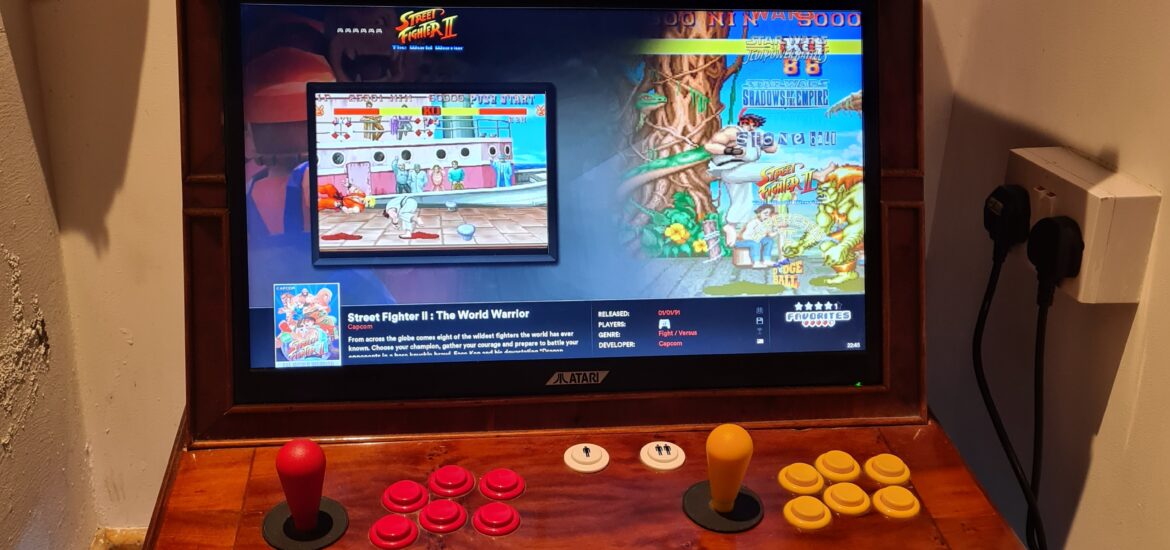I used to love video games. Something about the escapism and atmosphere of the arcades was intoxicating. As a child, for as long as you could make 10p last, you could be transported to another world. There was something about that price point that was perfect, too. On holidays, my brother and I would have £1 of pocket money, so if you picked wisely from the aisles of gleaming, flashing, and bleeping cabinets vying for your clutch of coins, you could walk away happy. These places were rare treats, somewhere we went, maybe on holiday or when travelling. As home computers took over and we eventually had an Acorn and then a Commodore Amiga at home, we played more games on them, cycling around to friends’ houses to swap titles, learning about cheat codes, cracks, diskcopy, dongles, and more.
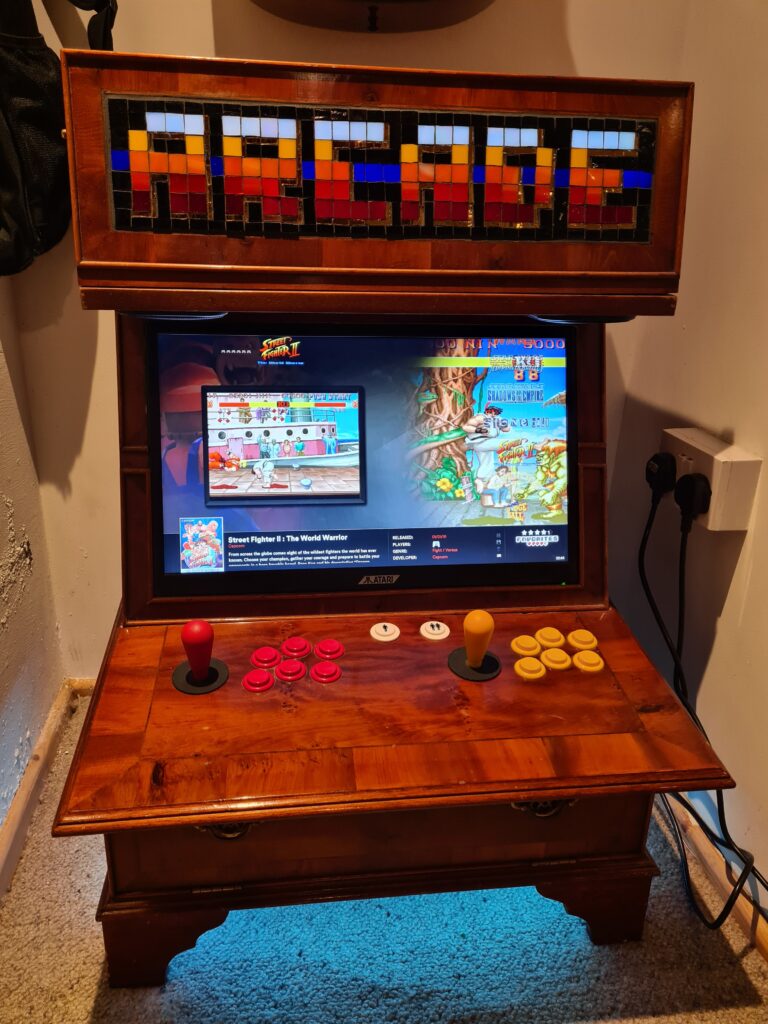
Arcades were rights of passage, too; spending your own money was a step up. I realise, as a parent now myself, that the moment of peace gained was money well spent too. There were hustles to be had too, if you knew, I remember some machines giving out free games if you power cycled them by crawling behind, or you’d occassionaly find a rejected coin unknowingly left behind, and I remember a very cheap World Cup 90 machine in a French campsite bar that you could get to return coins if you were prepared to accept a brief mains level electric shock, which of course we all were.

I thought it would be fun to build something for our kids, so they could enjoy these games too. I remember them being a lot of fun, especially when they were 2 player and you competed either together or against each other. There are a bunch of emulators around now, and some pretty cheap hardware, but this was a project envisaged in the madness of the second COVID lockdown, so I wanted to make it unique and sink some spare time into making it special.
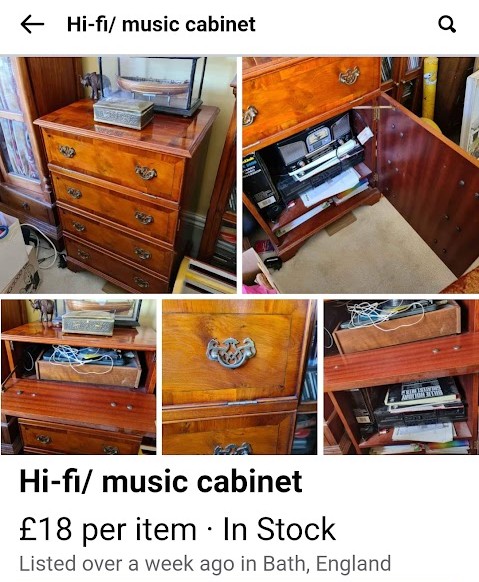
I had this idea to make something with a retro feel, but why not play with that? Perhaps we could make a retro concept that never existed in the first place? We found an old music cabinet with an early 1800s reproduction style on a marketplace and collected it. We talked about ideas for the build. I should have really planned the design and cutting much better, but in the end, I just eyeballed the layout as I went and marked it up with a ruler and masking tape, then cut out in the garden with a circular or jig saw as needed. In hindsight, I think I got lucky a few times and could have easily made some cuts that ruined the whole project, but didn’t!
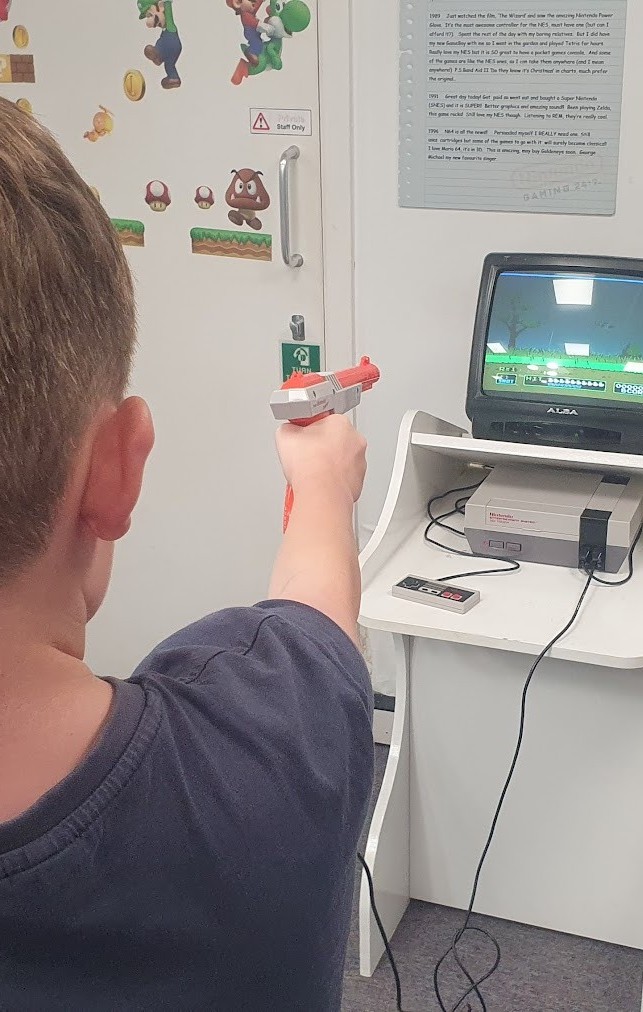
We went on a field trip to the Museum of Computing in Swindon, where they have a huge collection of old machines, many of which you can use. The boys seemed to like the gun games; we don’t have anything like that at home. I told them about school with BBC Micros. Unlocking classroom windows during lessons to climb back in at lunch.

Milo was a great help with stripping off all the old hardware from the cabinet. We kept all the brass pieces in case we wanted to use them again for the final cabinet, which we did. We put the handles on the sides and one on the top.
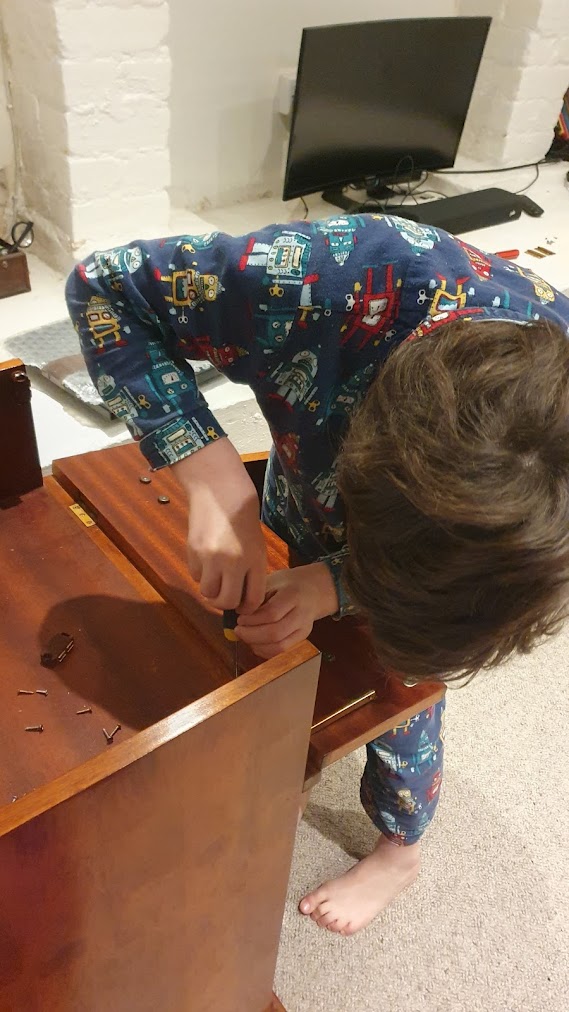
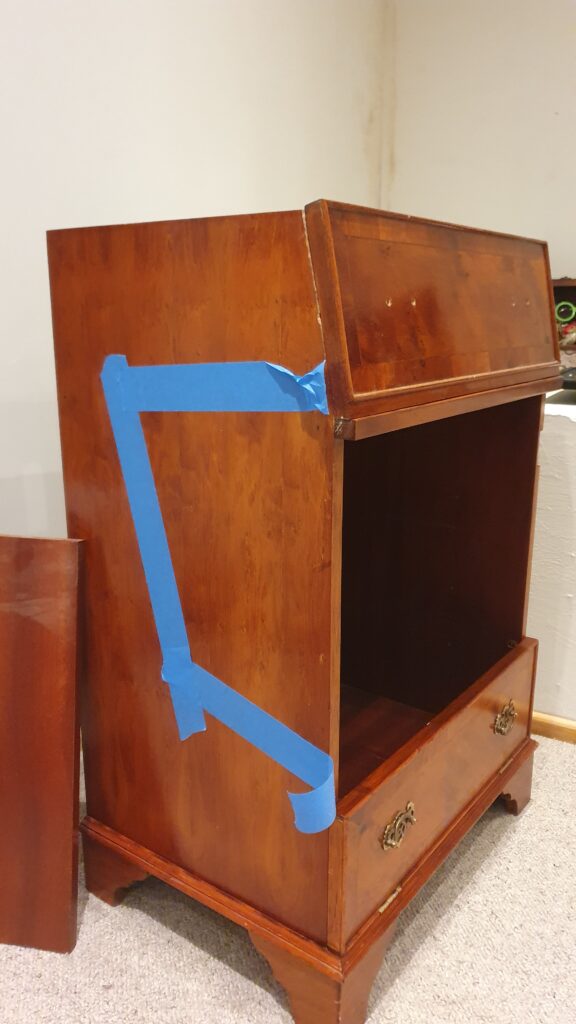
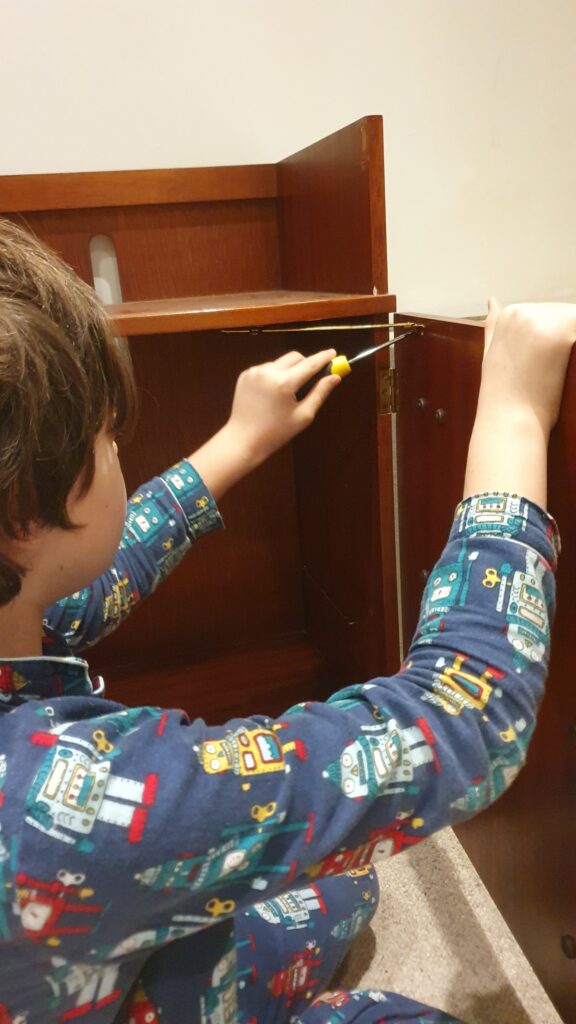
First, the monitor went in, then the flop top was moved down to be a surface for the controls, then finally I reconstructed the top to be ready for a marquee of some kind.
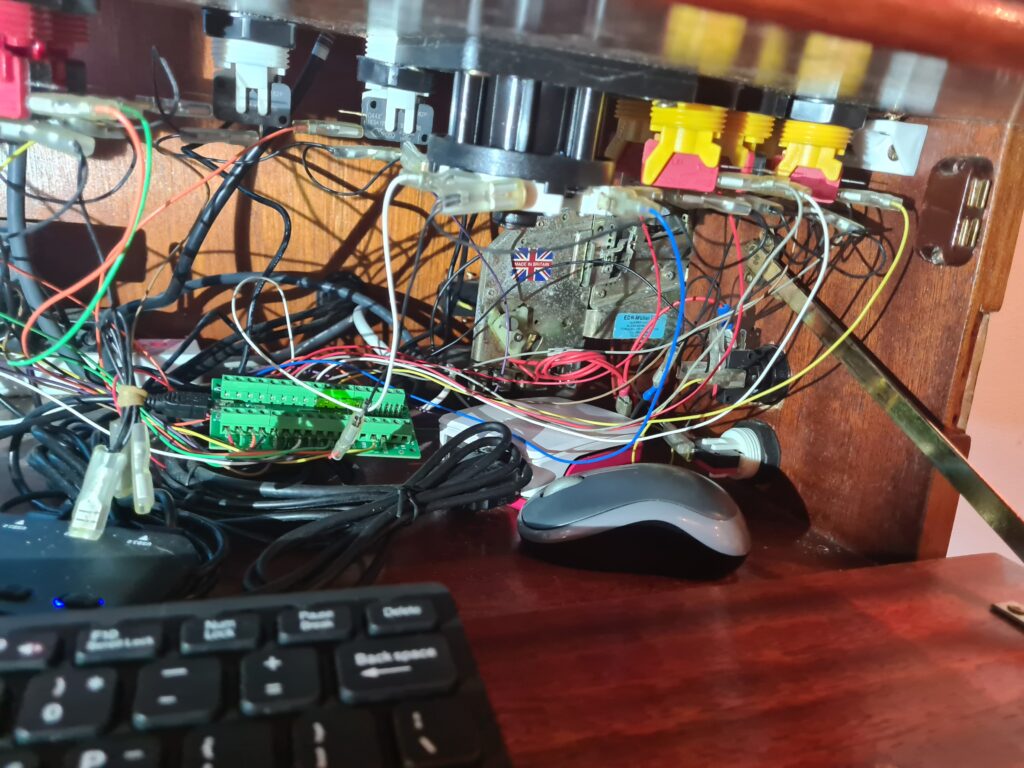
Once the structure was there I moved to the electronics, added a power strip and Raspberry PI 5, drilled in the controls according to a template from a Street Fighter II layout, fitted an amp and speakers courtesy of friends at Minirigs, added lighting to the marquee and underneath, mounted a reclaimed 10p coin mechanism, and finally it was all wired in underneath. It’s necessarily a bit of a mess. If I find the time, I’ll clean it up.
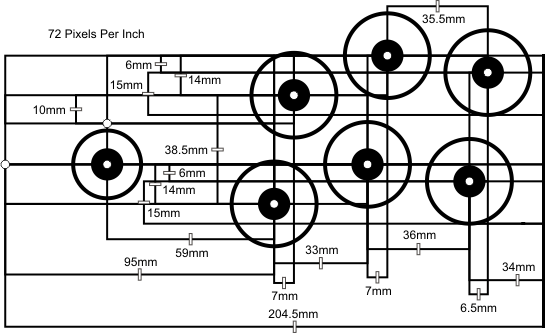
Once the physical build was complete, we played with a few arcade systems. Retropi was pretty good, but Batocera was light years ahead for look & feel, and configuration options. I set it up, copied some ROM files on, and it all worked. Mapping the joysticks and buttons was pretty hit and miss, but with the help of some forums, I found some settings that worked and got all the different systems responding well.
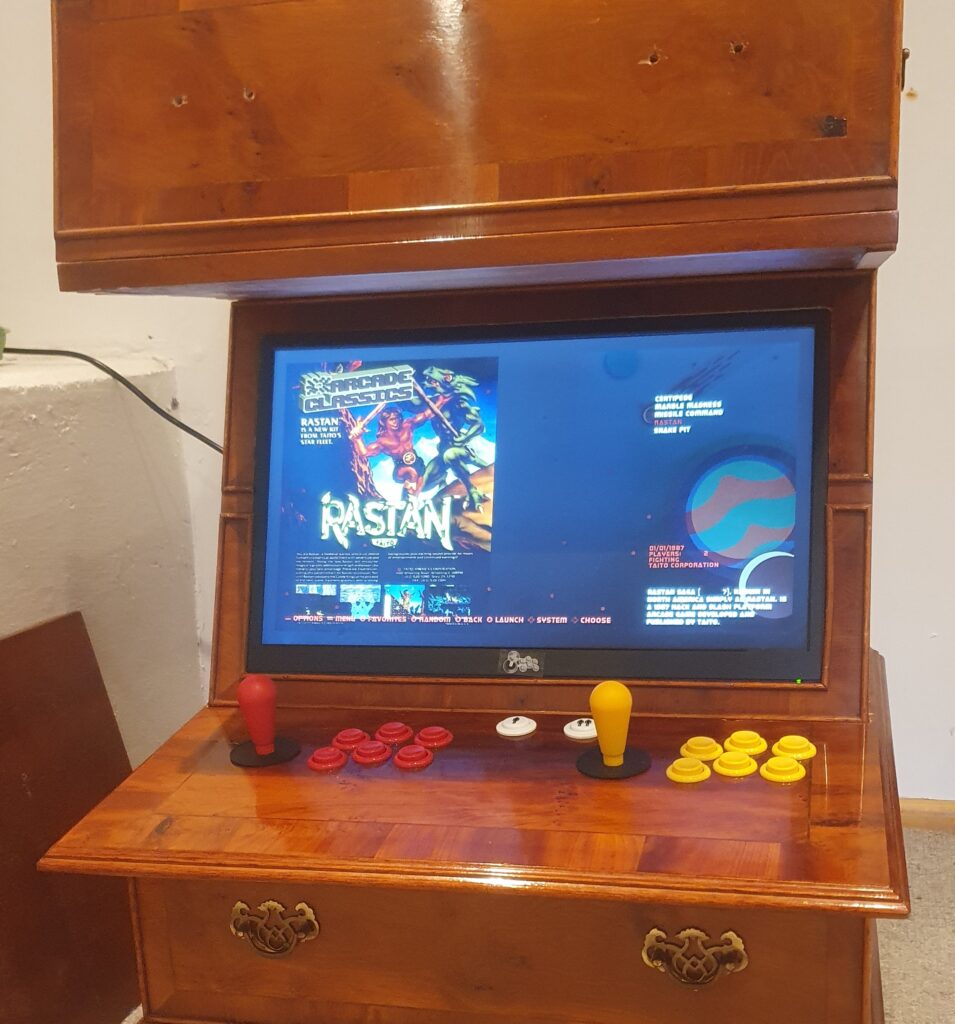
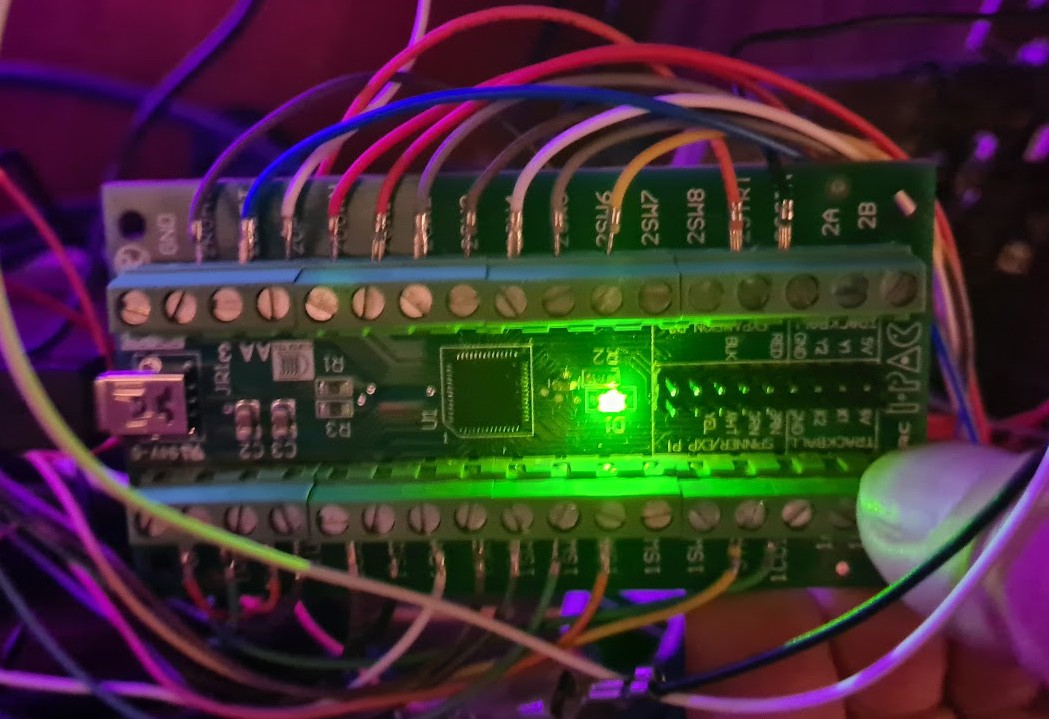
I played with connecting the controls directly to the GPIO on the Raspberry PI connectors, but in the end, an I-PAC2 keyboard emulator from Ultimarc was the most reliable and configurable option for £30.
I bought a couple of second-hand Xbox controllers to support games that needed a more modern range of inputs than the arcade classics and customised them to match the player 1 and player 2 colour scheme with some button mods from Temu. I also added some N64, SNES and Wii controllers for a bit of variety and to play the classics as they used to be.


It was all done, and the kids loved it, as did I. We played some old favourites, discovered some weird new ones and battled each other a lot. A few finishing touches were added, a box at the top for spare controllers, a keyboard and mouse for the games demanding them, a coin mech on the side set for old style 10 pence pieces thanks to a breakers yard based in Scotland, and finally a nod to the roots of arcade gaming with an Atari logo to cover the generic one on the monitor. The coin mechanism worked well. I removed the 240V power from the coin tester and wired it into the keyboard emulator to register coins as keyboard presses. We found a stack of old 10p coins at a boot sale!

But there was still something missing; the final finishing touch was to fill the marquee with something fitting. Bridget and I bounced some ideas and how pixel art fitted so well with her professional mosaic skills. I imagined a Space Invaders style block wording, Bridget found the iconic desert chrome effect, and we collected ideas for inspiration. The more you look around, the more you find it, with its nod to freedom, adventure, and limitless horizons. I ordered a piece of perspex from a local fabricator who was really helpful discussing available sizes and transparency options, fitted it to the cabinet, then Bridget took it on, spending a bunch of nights working her magic. She hand-cut the tesserae and fixed them with silicon, allowing light to pass through. It couldn’t be more perfect, a crazy retro modern handcrafted marquee that breaks as many rules as it follows.

I went on a work trip to Las Vegas at the same time and saw the inspiration with my own eyes as I woke with jetlag at 4 am and looked out from the 30th floor of the Mandalay Bay Hotel at the end of the strip.

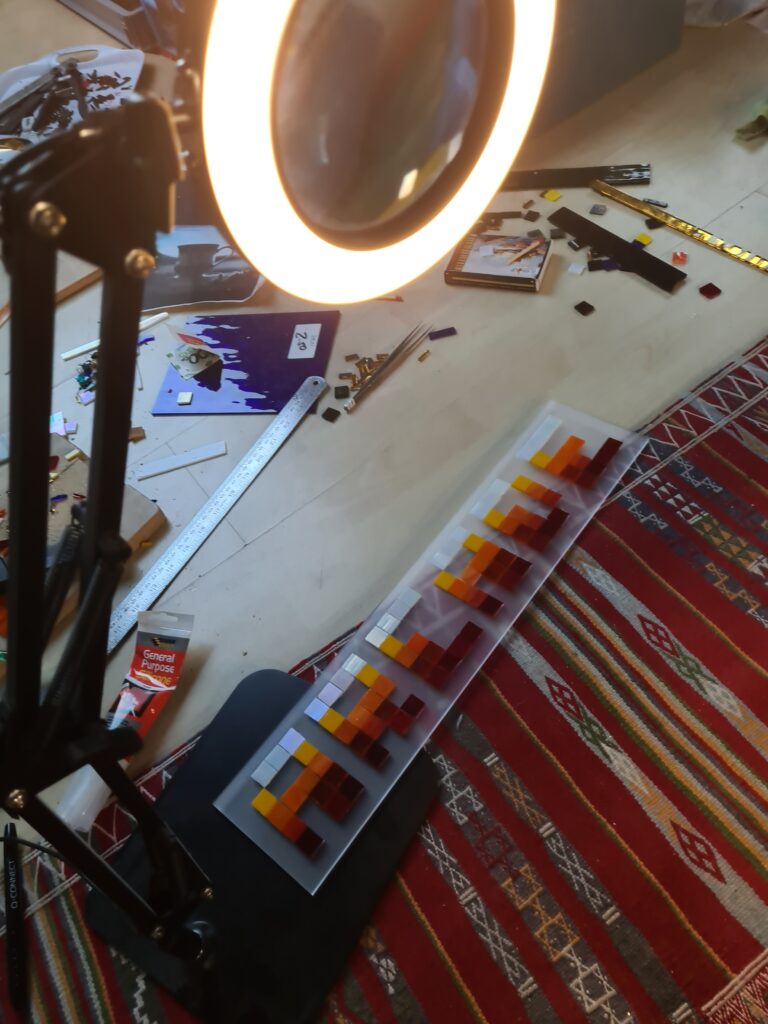
I absolutely love what she did. It fits so well and is as bonkers as the rest of it. But best of all, I love that as two people who tend to burst with ideas, generally chasing our own, that we found something we wanted to follow a creative process on together, rolling around ideas, improving, testing, and realising it whilst spurring each other on.
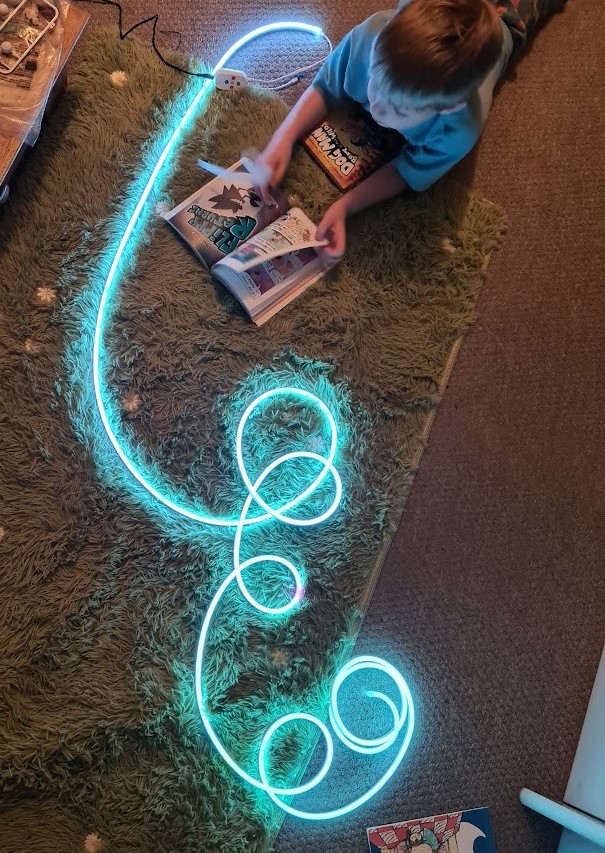
I love how this shimmers, the colours from desert chrome, and the gold accents. Also, the nod to pixel art that blends digital and organic forms into one.
And here is the finished work. A retro modern arcade machine that never existed in the first place. Powered on a Raspberry PI with Batocera, complete with flashing lights, bleeping speakers, a stack of classic games, a bunch of old controllers, and a working old 10p coin slot. I’m really proud of this; the kids love it, and most of all, I love that Bridget and I worked on it together and created something unique. This was a couple of years of tinkering, all in, and very on and off. Given there wasn’t much of a plan to start with and it just kind of evolved, it ended up in a great place. I’m resisting adding a light gun to it at the moment. Let’s see…

